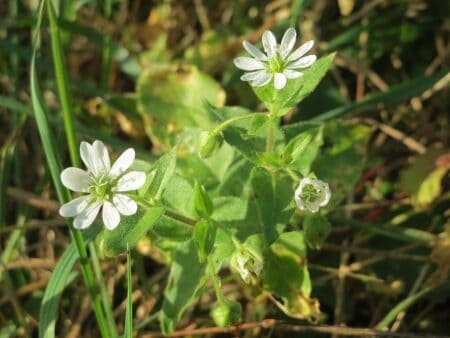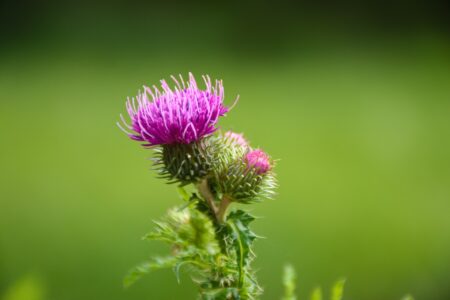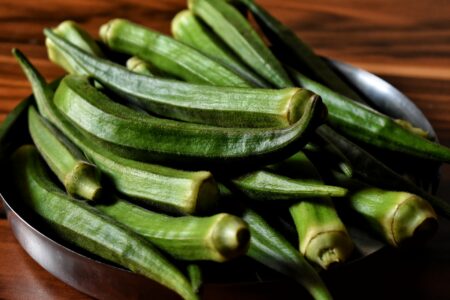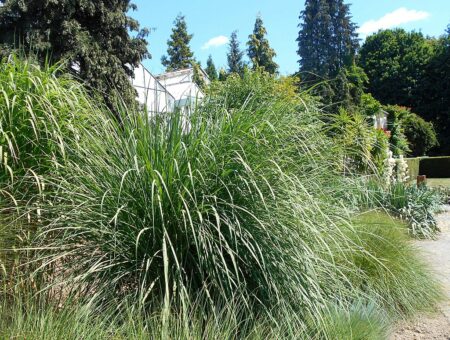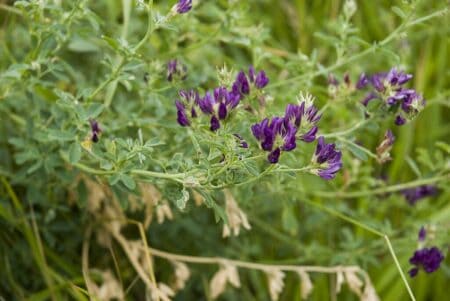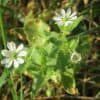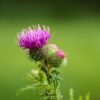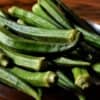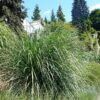Arborvitaes are hardy evergreen trees, generally with a pyramid shape, which are commonly found in many gardens. However, the shape depends on the variety. These trees are mainly used as windbreaks or privacy hedges. Smaller cultivars of this plant are also used as foundation plantings or accent plants.
The reason for being so common and popular? They are easy to take care of, and some cultivars grow quite fast. All varieties of Arborvitae are slightly toxic to humans and pets. Arborvitae in Latin means “tree of life,” and there are 5 known species of “Thujas.” Interesting fact – Thuja means perfume in Greek!
- Korean arborvitae (Thuja koraiensis)
- Giant arborvitae (Thuja plicata)
- American arborvitae or Eastern arborvitae (Thuja occidentalis)
- Japanese Arborvitae (Thuja standishii)
- Sichuan Arborvitae (Thuja sutchuenensis)
Different types of Arborvitaes
Sometimes it can be difficult to choose what type of Arborvitae to choose for your garden, backyard, or front yard. We have made a detailed list of 15 different varieties to make it easier for you.
Green Giant
This fast-growing variety can grow up to 3 feet per year until it matures. Thrives in hardiness zones 5-8. It can grow up to 50-60 feet and 12-20 feet wide, hence the name Giant. Its foliage bronzes a little during winter.
A great choice for tall privacy hedges since they grow very quickly! Plant the Green giant in well-drained soil. The green giant is very salt-sensitive! Green Giant is shaped like a pyramid and is more deer-resistant than other Arborvitae.
Emerald Green (Thuja occidentalis Smaragd)
It is the perfect choice for a dense hedge. It can grow up to 14 feet (4 meters) in height. This type of Thuja does not bronze in the winter and has a distinct columnar shape. Grows in USDA zones 2-7. Smaragd means emerald in Danish.
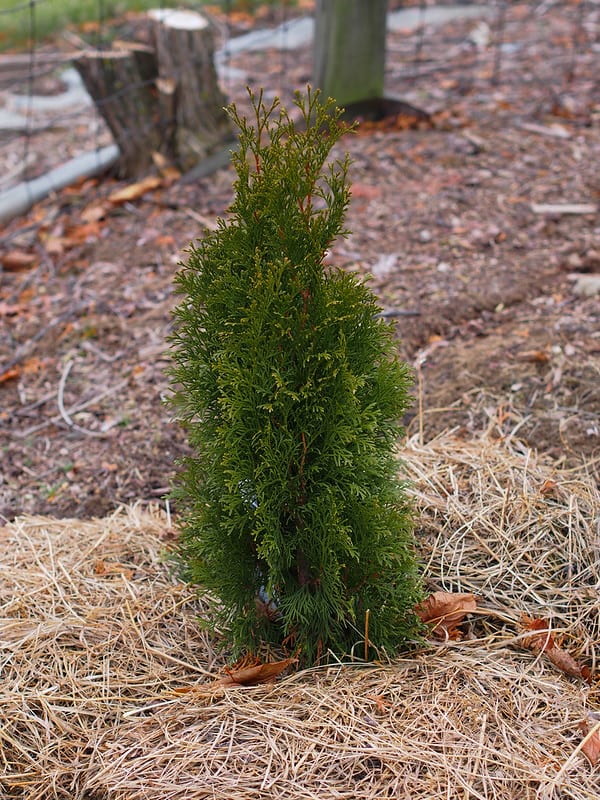
Little Giant
Slow-growing ball-shaped type, ideal as a small detail tree in your garden. Little Giant does not bronze during colder periods; the foliage is dark green. Does not require trimming to retain its spherical shape! Thrives in USDA zones 3-8 can grow up to 5 feet (1,5 meters) in height.

American arborvitae (Thuja occidentalis)
Probably the most common type, American Arborvitae can grow up to 50 feet (15.2 meters) in height and thrives in USDA Hardiness zones 2-7. Other known names are eastern Arborvitae, eastern white cedar, northern white cedar, and swamp cedar. Depending on the cultivar, northern white cedar can have rounded, skinny, columnar, or pyramidal shapes.

Woodward
Tends to grow more like a bush rather than a tree. Terrific hedge plant since it keeps its shape, even without pruning. Grows in ball-like shape, can reach 5 (1.5 meters) feet in height, 7 feet (2.1 meters) wide. Grows in USDA zones 3-7. Leaves turn yellow in the winter.
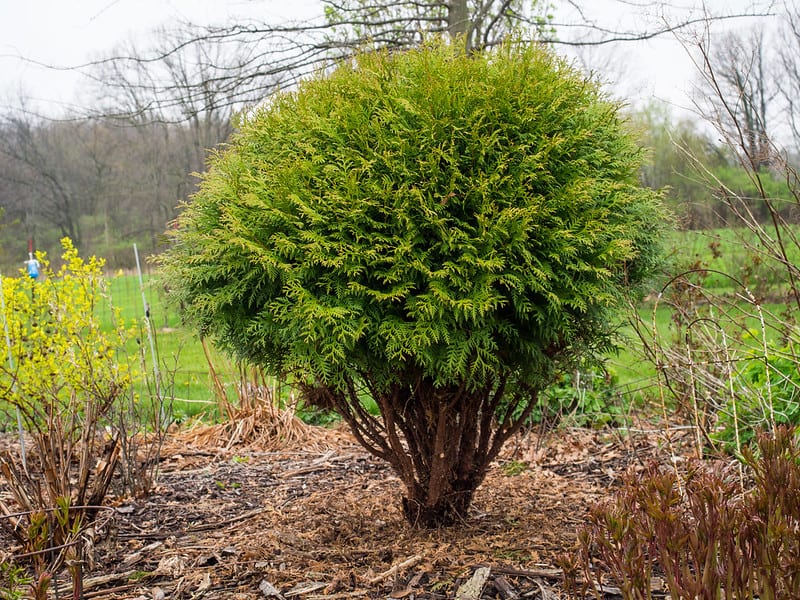
Yellow Ribbon
Has upright growth and a narrow pyramidal shape. Has green foliage, which is a bit yellow in the spring. If you want a tall hedge with different colors, Yellow Ribbon works well. USDA zones 2-7. Height up to 10 feet (3 meters).
Fire Chief
Small shrub variety, its foliage changes color depending on the season, having red tips in the winter, dark green in the summer, and golden in the spring. Terrific foundation plant. Grows in USDA Hardiness zones 5-7, height 3 to 4 feet (1.0 to 1.2 meters). This variety adds color to your garden, even in the winter!
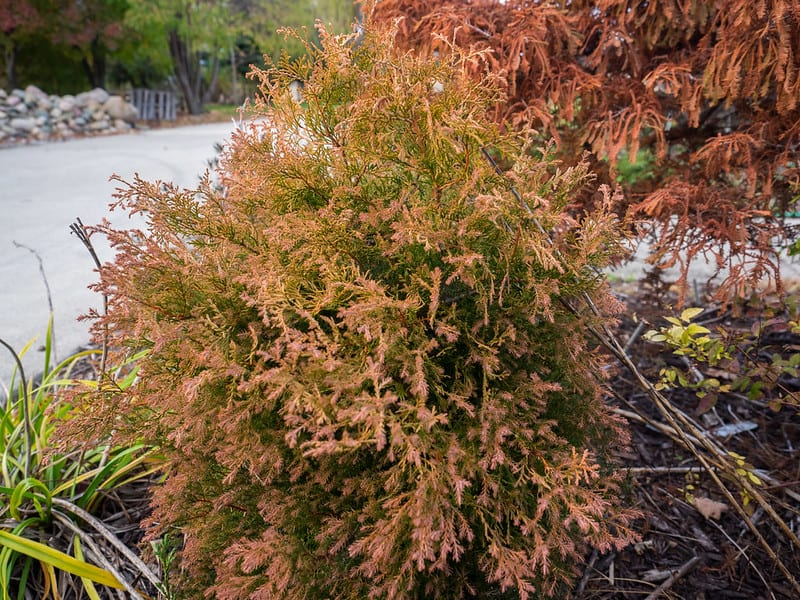
Berkman’s Gold
Also known as Aurea Nana, grows in globular shape and has green foliage with bright yellow tips. This dwarf variety is drought tolerant. However, it bronzes in fall or winter. Can grow in USDA Hardiness zones 6-8. Grows 6 feet (1.8 meters) tall. It can be used as a low hedge but works better as a detail to catch people’s eye.
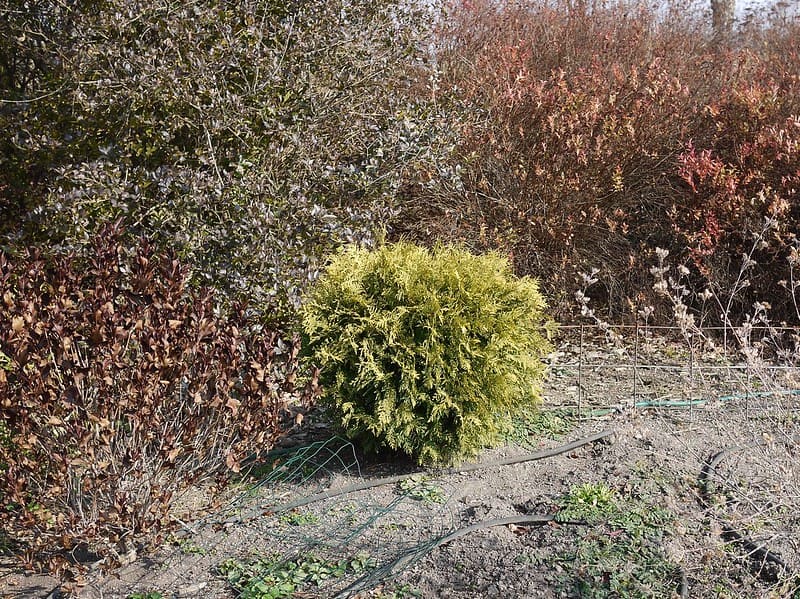
Weeping Eastern Arborvitae
Very different from western Arborvitae. Barely grows upright without staking and has downward-facing branches. Matures in about 10 years, reaching 10 feet (3 meters) tall. Thrives in USDA Hardiness zones 3-7. Weeping Eastern belongs near a pond or a river with its unique look.
Rheingold
Rheingold has very beautiful bright golden leaves and slowly grows up to 5 feet (1.5 meters) tall. It will really stand out from other trees. Grows in USDA Hardiness Zones 4-8.
Filips Magic Moment
Grows in USDA zones 3-7 and can grow up to 8 feet (2.4 meters) tall. Filips magic moment grows best in full sun; it also keeps its yellow color during all seasons like Rheingold but looks greener. A lot of these together make a stunning golden-haired living hedge.
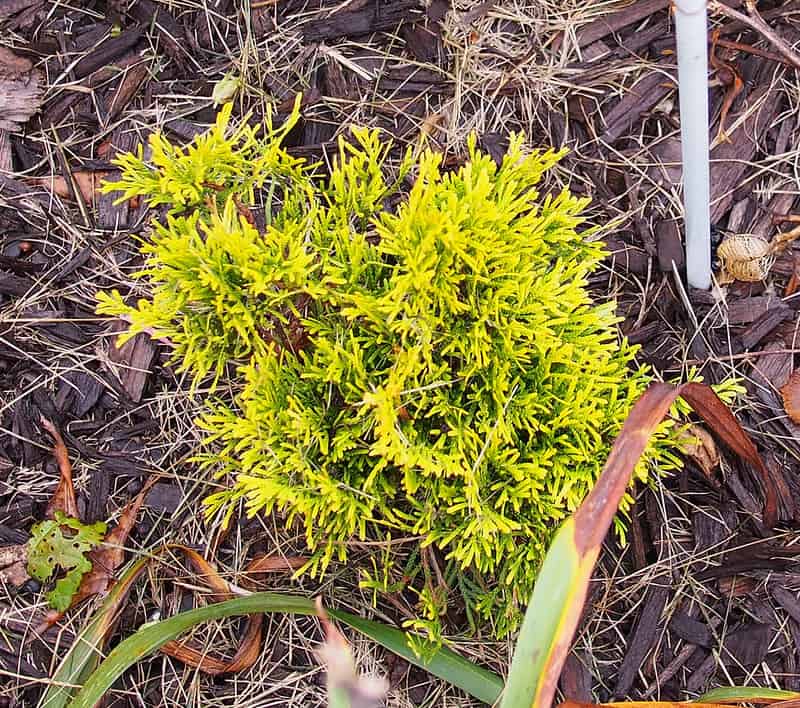
Art Boe
Also known as the North Pole. Has dark green leaves and a very narrow columnar shape. It can grow up to 6 feet tall (1.8 meters). Grows in USDA Hardiness zones 3-7. If you prefer a dark green hedge, this variety is excellent, although they grow quite slowly.
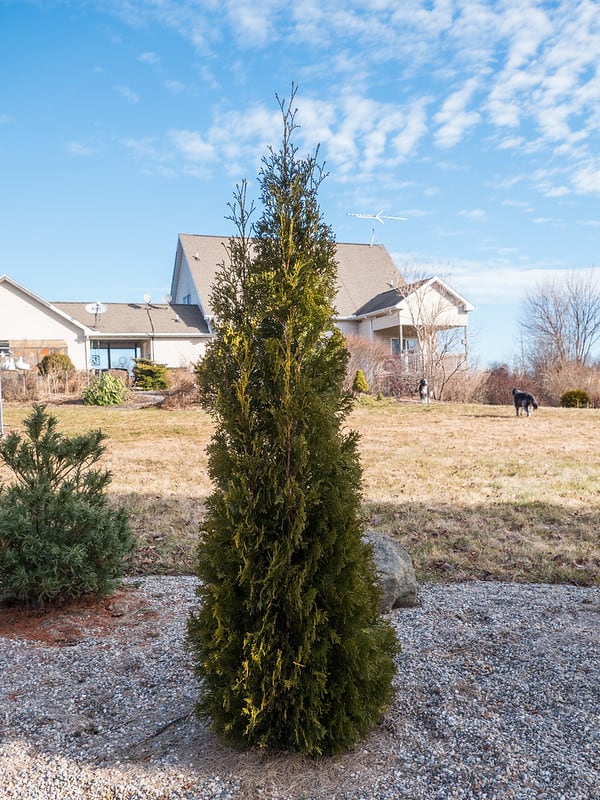
Oriental
One of the tallest varieties, which is native to Asia. It can reach 65 feet (20 meters). Does not really have applications for backyards or gardens unless you have a lot of space. However, dwarf cultivars can be ideal foundation plants. Grows in USDA zones 6-9.
Danica
This particular type grows in a globular shape and can only reach 2 feet (0.6 meters) in height. Has green foliage and grows in USDA Hardiness zones 3-7. Foliage turns a little bronze during the winter, but mostly retains its green color. Since they lack in height, they’re good for foundation plantings, edging plants, or border shrubs.
Hetz Midget
Hetz Midget or Tater Tot Arborvitae is a dwarf variety with dark green foliage. It does turn a bit bronze in the winter. Looks very cute and spherical. USDA zones 3-7 can reach 4 feet (1.2 meters).

Basic Arborvitae care
- Arborvitae wants well-drained soil. Otherwise, it might get root rot easily.
- Arborvitae wants at least 6 hours of sun but can tolerate 4-6 hours.
- The soil must be neutral from (7-8) pH.
- Depending on the variety, plant them widely enough. If they do not have enough room, they will not grow as tall.
- Prune arborvitaes in the fall or early winter.
- They will not produce new growth on older stems! Do not remove more than 1/3 of the live foliage area!
- Strong summer sun can scorch the plant during unusually sunny and high-temperature periods, give the Arborvitae more water, and provide some shade if possible.
- Fertilize Arborvitae once a year with a slow-release fertilizer.
Watering
When planted, Arborvitae must be watered daily, and the soil must be moist. This is ideally done by an automatic drip system, slow drip for a long time. After about a month, you should water every 4 days when the top of the soil is dry. Usually, after that, rainwater is enough for Arborvitae unless there are exceptionally dry periods.
Common Problems
Deer – They enjoy feasting on young arborvitae plants. Surround young plants with a fence if deer are wandering about in your area.
Bagworm – Sometimes, these enjoy living on the “tree of life.” Use insecticide spray with malathion, diazinon, or carbaryl.
Leaves are turning yellow – This can be a natural occurrence, depending on the variety. If your variety is supposed to stay green, it lacks water.
Final Thoughts
Arborvitaes are great hedges, foundation plants, borders, wind breaks and accent plants. Choose the best variety for your needs from our list!


